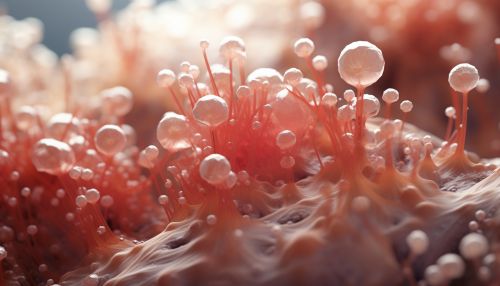Candida
Overview
Candida is a genus of yeasts and is the most common cause of fungal infections worldwide. Many species are harmless commensals or endosymbionts of hosts including humans, but other species are potentially serious pathogens that can cause both superficial and invasive infections in humans.


Classification
Candida is a member of the fungus kingdom and is a part of the phylum Ascomycota, which also includes other common fungi such as Aspergillus and Penicillium. Candida is classified under the order Saccharomycetales and the family Saccharomycetaceae. The genus Candida includes over 150 species. Among these, Candida albicans is the most commonly isolated species and is responsible for most Candida infections.
Biology
Candida species are usually found in the human gut flora. The fungal cell has a rigid cell wall made up of chitin and various glucans, and a cell membrane containing ergosterol. Candida species are capable of living in a wide range of environments including the human body. They can survive in both aerobic and anaerobic conditions, and in a wide range of temperatures, pH levels, and nutrient conditions.
Pathogenicity
Candida species can cause infections if they enter the bloodstream or internal organs such as the kidney, heart, or brain. Invasive candidiasis is a serious condition that can be life-threatening. Risk factors for invasive candidiasis include use of broad-spectrum antibiotics and central venous catheters, and immunosuppression.
Diagnosis and Treatment
Diagnosis of Candida infection involves microscopy, culture testing, and sometimes, serological tests. Treatment typically involves the use of antifungal medications, such as fluconazole or amphotericin B. In some cases, surgery may be required to remove the source of the infection.
